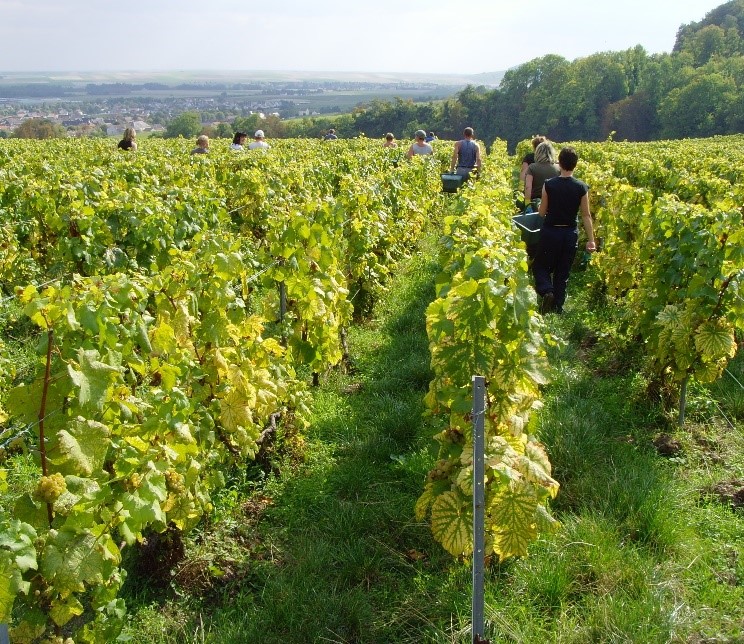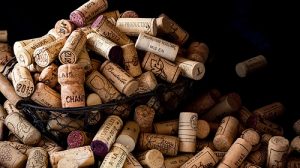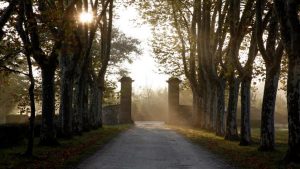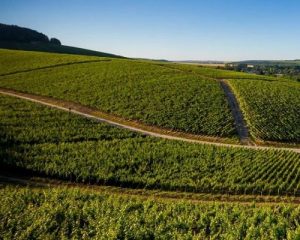
Last Friday, we finished off the week on a high note with an exclusive interview with Sophie Larmandier.
In 2017, our former intern Pierre Renauld (who has now founded his own wine bar 228 Litres in partnership with iDealwine) was lucky enough to visit this champagne house. As big fans of these champagnes, the iDealwine team wanted to find out more about how this key figure for organic champagne works.
Could you tell us about your champagne house and the different roles involved?
The domain is a family business; I therefore work with my husband and my son. Organic viticulture was a risky decision for us and we share the different tasks between us, always making decisions together. What we appreciate most is that we make the sort of wine that we enjoy and we don’t feel forced to please everyone.
So your son has started helping you at the domain?
Exactly. Like us, he started with business school before going back to his roots. For the past two years, he’s been learning about how we manage the business, the vines and the winery. We are not yet ready to definitively pass over the domain; Pierre and I are only 50 years old…we have a few years of work left in us!
You mentioned organics. What encouraged you to change viticultural methods?
I’ve always been quite disgusted by champagne producers who douse their vines with chemical products. That’s why I never wanted to marry a wine grower. But then I met Pierre, we got married and decided to look after his family vineyard. We visited Burgundian domains such as Leflaive and Pierre Morey and something inside us clicked. We received organic certification in 2003. In the meantime (since 1999) we had been practicing biodynamics and fermentations with indigenous yeasts. All in all, the 90s allowed us to piece together all of the different elements surrounding viticulture. I must say that this philosophy demands time and investment, but it is rewarding and makes the profession so much more enjoyable!
Could you describe your methods in the vineyard?
It goes without saying that the health of the soil is paramount. Pierre, my son and I would like it to regain its natural balance, so that the plants themselves are balanced and their grapes can fully ripen without complications. The vines have been there for generations; they need diversity, especially mushrooms for instance, so that they can nourish and renew themselves. We therefore work hard to make a good compost for the plants.
How do your vinifications stand out from those of your neighbours?
First of all because we harvest and vinify each terroir separately. We pay particular attention to the ambient yeasts which symbolize a terroir. They bring energy to our Chardonnay, which must carry the expression of its terroir and vintage. We thus intervene as little as possible and add very few sulfites to the wines which we don’t filter. As you know, there is a natural balance which is lost when wine is filtered.
Regarding dosage (one of the most important steps in champagne vinification!), we add almost nothing. Our “Terre de Vertus” is therefore not dosed and has a very saline profile. The others have between 3 and 4g of sugar added, which is very little, as we don’t want to change the final taste of our wine.
Speaking of taste, how would you define your wines? In what ways do they express their terroir?
We are lucky to have fantastic terroirs and we like pure, energetic wines. They express the lovely ripeness of our grapes as well as the minerality of the chalky soils where they grow. In order to bring structure and taste to the freshness of our wine, the wines undergo a slightly oxidative élevage in barrels which nevertheless don’t mark the wines aromatically. In short, we look for complexity without heaviness.
What are your plans for the future?
We’re always trying new things. The balance of our soils is our biggest concern, so we are constantly improving our compost. We are also planning on bringing out new cuvées. As regards our son, he is experimenting with macerations and élevages in amphorae. We will see what the results are before deciding whether to sell them to the public or not.
Do you have any advice for our readers regarding cellaring?
Our three great terroirs Vertus, Cramant and Avize are made for cellaring. We only release Cramant after 10 years of aging at the domain, but it would benefit from further aging. Longitude and Latitude are blends which can be enjoyed from now for the next 10 years.
It’s worth remembering that Chardonnay grown on chalk can age wonderfully. In Vertus, it lends a peppery, spicy character, whereas in Cramant it manifests itself in a richness and opulence with honeyed notes, even cocoa and coffee depending on the vintage.
Your descriptions tickle the taste buds! Do you have any food pairing advice?
I like aperitif: it’s a moment made for sharing, during which champagne has pride of place. I enjoy pairing my champagnes with aged comté and parmesan, the salt crystals bring out the fruitiness of the wines!
We would like to thank Sophie Larmandier for her time; we cannot wait to taste these wines soon and to give you our verdict by way of a tasting video. If we’ve tempted you with this interview, why not have a look at the champagnes from Larmandier-Bernier currently for sale on iDealwine? Enjoy! 😊



